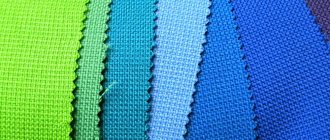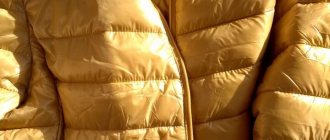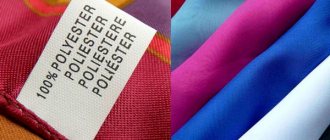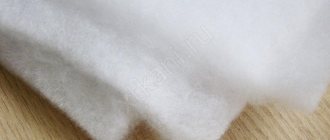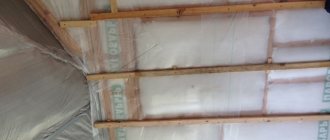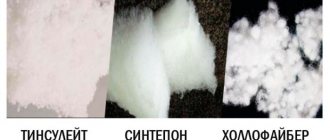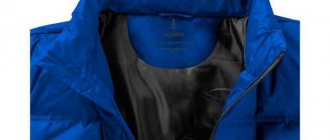Have a good day and good mood everyone! Today, my dear reader, I propose to consider a question dedicated to such fabric as polyester. You've probably heard this name quite often, because it follows us in almost every textile item used in everyday life: towel, pillow, blanket, dress, blouse, tights, etc. As you may have guessed, this list can be continued for quite a long time. Have you ever asked questions like: What is polyester? Why is polyester added to the main fabric? What properties does polyester have? Why was polyester invented in the first place? If not yet, then I suggest you think about it, get answers, and start, traditionally, with the history of its origin.
1. The history of polyester; 2. Polyester production technology; 3. Properties of polyester; 4. Polyester in combination with other fabrics; 5. Using polyester; 6. Care of polyester products; 7. Customer reviews.
Appearance and properties
Polyester (pes, polyester, PE) is available in the form of plastic, film and fiber. At first it was mainly used for the production of plastic containers. Today it is widely used in the textile industry. It has water-repellent properties, withstands long-term abrasion, and retains its shape well.
Data. Polyester decomposes at 360°C, melts in the range from 250 to 265°C. Density varies from 1.38 to 1.4 g/cm3. PE absorbs 0.3% moisture (percentage of its own weight). Polyester fibers elongate by 12-55%.
Polyester dissolves in a number of organic substances, such as:
- ethyl acetate;
- toluene;
- benzene;
- acetone.
The synthetic substance is too tough for any of the living creatures living on Earth, so it accumulates and pollutes the natural environment. New technologies have managed to turn the disadvantage of polyester, namely its excessive durability, into an advantage. As a result, many well-known brands have clothes made from recycled polyester that look good. Recycled material is used in the production of furniture upholstery, durable cords, compact discs, household appliances, plastic containers, bottles and bags.
Origin of fibers and production of fabrics
Polyester is a group of fabrics consisting of polyester fibers. They are made from polyethylene terephthalate (C10H8O4)n, a polymer that under normal conditions appears as a white solid. Different manufacturers' methods for making PE may vary, but the basic principles remain the same.
The process of creating polyester is a chain of complex chemical transformations involving many reagents and compliance with certain conditions.
The raw materials are petroleum products, namely:
- ethylene glycol;
- terephthalic acid, or rather its dimethyl ester, that is, ether.
Transesterification and polycondensation of reagents with the participation of catalysts leads to the formation of polyethylene terephthalate, which has the form of a resin. The manufacturing process also includes steps that increase the viscosity of the polymer.
When heated, polyester melts, and if it is passed through the smallest holes, the finest streams are obtained. When cooled, they harden and form threads. By changing production technology, it is possible to obtain fibers of varying degrees of smoothness and thickness.
Density classification
Fabric density is measured in denies, that is, the ratio of fiber mass to length. The most common types of polyester are presented in the table below.
| 300 d | 500 d | 900 d |
| PE of the lowest density, from which accessories, travel and sports equipment are made. | Fabric from which backpacks, tents, and awnings for transport are sewn. | PE, does not allow sunlight to pass through, and also repels moisture. Suitable for extreme conditions. |
Types of 100% polyester fabrics
The variety of 100% polyester depends on the technology of weaving the fibers. According to this feature, polyester can be textured, filament, bulk, staple, and also in the form of monofilaments. These fabrics are used to make soft toys, textiles, and clothing. Their different types, such as holofane, synthetic winterizer, holofiber are used as insulation. Holofiber consists of hollow twisted threads, and padding polyester consists of dense but filled fibers. Both are distinguished by environmental safety, the ability to remove excess moisture, and the ability to retain heat.
Polyester is a multifaceted material and can be hidden under a number of names, among the main ones:
Author:
Zakharova Nina Afanasyevna
I hope you like my article! If you find any shortcomings, just write to me about it! I am always ready for a conversation and will answer any questions you have, ask them!

